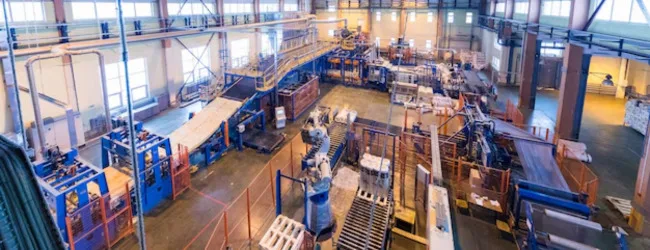Dreaming of building a lucrative business? The wire manufacturing industry presents a significant opportunity, especially in a rapidly developing economy like India. If you’re wondering how to start a wire manufacturing business,” you’ve come to the right place. This comprehensive guide breaks down the process into 10 easy-to-follow steps, helping you navigate the complexities and potentially earn crores.
Why Wire Manufacturing Business?
- Infrastructure Boom: India’s infrastructure development, including housing, power transmission, and telecommunications, is driving massive demand for wires.
- Automotive Sector Growth: The burgeoning automotive industry requires various types of wires for electrical systems.
- Electronics Expansion: The growing electronics manufacturing sector in India is another significant market for wires.
- Export Potential: India is becoming a key player in the global wire market, offering substantial export opportunities.
10 Easy Steps to Start Wire Manufacturing Business

1. Hyper-Focused Market Research
- Beyond General Demand: Don’t just look at “electrical wires.” Specialize. Are you focusing on:
- High-tension cables for power grids? (Heavy investment, high returns)
- Automotive wiring harnesses? (Requires precision, strong OEM relationships)
- Specialty wires for electronics (e.g., medical devices, aerospace)? (High-tech, niche market)
- Building wires for residential and commercial projects? (Volume-driven, competitive).
- Geographic Focus: Analyze specific regions. Some states have higher industrial demand, while others have booming residential construction.
- Competitive Intelligence:
- Visit local wire shops and distributors. Understand their pricing, product range, and customer preferences.
- Analyze import-export data to see where demand is being met from outside India. This highlights opportunities.
- Practical Tip: Create a SWOT (Strengths, Weaknesses, Opportunities, Threats) analysis of your top 3 competitors.
2. Crafting a Bankable Business Plan with Realistic Financials
- Detailed Financial Projections: Don’t just estimate.
- Get quotes from machinery suppliers for accurate CAPEX.
- Research raw material prices from multiple vendors (including import options).
- Factor in working capital for at least 3-6 months of operations.
- Create a detailed break-even analysis.
- Contingency Planning: Include a section on how you’ll handle price fluctuations, supply chain disruptions, and unexpected expenses.
- Practical Tip: Consult with a chartered accountant specializing in manufacturing businesses. They can help you create realistic financial projections and navigate tax implications.
3. Licenses and Compliance

- Environmental Clearances (Crucial):
- Understand the specific requirements for your state. Some states have stricter regulations than others.
- Engage an environmental consultant to streamline the process.
- Practical Tip: Begin the environmental clearance process as early as possible, as it can be time-consuming.
- BIS Certification (Quality Assurance):
- Don’t just aim for basic certification. Consider higher-level certifications for premium products.
- Invest in a well-equipped quality control lab.
- Practical Tip: Have a BIS consultant on board from the beginning.
- Labour Laws: Be thorough with EPF, ESI, and other labour-related compliance.
- Practical Tip: Create a compliance checklist and update it regularly.
💡Pro Tip: If you want to start a manufacturing business but have too many doubts, connect with a manufacturing business expert from Boss Wallah for guidance – https://bw1.in/1116
4. Strategic Financing and Investment
- Government Schemes (Maximize Benefits):
- Explore schemes like CGTMSE (Credit Guarantee Fund Trust for Micro and Small Enterprises) for collateral-free loans.
- Look into state-specific incentives for manufacturing businesses.
- Practical Tip: Visit your local District Industries Centre (DIC) to learn about available schemes.
- Angel Investors/Venture Capital (For Scalability):
- If you have a unique product or technology, consider seeking angel investment or venture capital.
- Practical Tip: Prepare a compelling pitch deck that highlights your competitive advantage and growth potential.
- Equipment Financing: Many machinery suppliers offer financing options.
5. Smart Land Acquisition and Infrastructure Development
- Industrial Zones (Advantages):
- Consider setting up your factory in an industrial zone to benefit from shared infrastructure and streamlined approvals.
- Practical Tip: Visit industrial zones in person to assess their suitability.
- Plant Layout (Efficiency):
- Design your plant layout for optimal workflow and material handling.
- Consider future expansion plans.
- Practical Tip: Use CAD software to create a detailed plant layout.
- Power and Water (Reliability):
- Invest in backup power generators and water storage tanks to ensure uninterrupted operations.
- Practical Tip: Negotiate favorable electricity and water tariffs with local authorities.
6. Investing in the Right Machinery and Technology

- Automation (Long-Term Savings):
- Invest in automated machinery to reduce labor costs and improve efficiency.
- Practical Tip: Research and compare machinery from multiple suppliers, both domestic and international.
- Preventive Maintenance (Minimize Downtime):
- Implement a robust preventive maintenance program to keep your machinery in top condition.
- Practical Tip: Train your maintenance staff on troubleshooting and repair procedures.
- Software and Technology: Implement ERP and CRM software to streamline operations and manage customer relationships.
7. Building a Reliable Supply Chain
- Multiple Suppliers (Risk Mitigation):
- Don’t rely on a single supplier for raw materials.
- Practical Tip: Develop a supplier rating system to assess their performance.
- Inventory Management (Optimize Stock Levels):
- Use inventory management software to track stock levels and avoid stockouts.
- Practical Tip: Implement a just-in-time (JIT) inventory system to minimize storage costs.
- Logistics:
- Carefully plan your logistics. Wire can be heavy and bulky.
- Practical Tip: Negotiate good rates with multiple trucking companies.
ALSO READ | 10 Highly Profitable Low Cost Manufacturing Business in India for 2025
8. Developing a Skilled and Motivated Workforce
- Training and Development (Continuous Improvement):
- Invest in ongoing training programs to keep your employees up-to-date on the latest technologies and best practices.
- Practical Tip: Partner with local technical institutes to provide on-the-job training.
- Employee Welfare (Retention):
- Offer competitive salaries, benefits, and a positive work environment to attract and retain skilled workers.
- Practical Tip: Implement an employee recognition program.
- Safety Training: Wire manufacturing can be dangerous, so regular safety training is a must.
9. Implementing a Rigorous Quality Management System

- Testing and Inspection (Beyond BIS):
- Invest in advanced testing equipment to ensure product quality exceeds industry standards.
- Practical Tip: Implement a statistical process control (SPC) system to monitor and control product quality.
- Customer Feedback (Continuous Improvement):
- Actively solicit customer feedback and use it to improve your products and services.
- Practical Tip: Create a customer feedback portal on your website.
10. Strategic Marketing and Sales
- Digital Marketing (Targeted Reach):
- Invest in SEO, social media marketing, and online advertising to reach potential customers.
- Practical Tip: Create a content marketing strategy that showcases your expertise and product quality.
- Relationship Building (Long-Term Partnerships):
- Focus on building long-term relationships with distributors, contractors, and OEMs.
- Practical Tip: Attend industry events and network with key players.
- Export Opportunities: Explore exporting your products to neighboring countries and beyond.
Need Expert Guidance?
Starting a business can be challenging, but you don’t have to do it alone! At Boss Wallah, our 2,000+ business experts are ready to provide valuable insights and guidance. Whether you need help with marketing, finance, sourcing, or any other area of any business, our business experts are here to help you succeed- https://bw1.in/1116
Confused about Which Business to Start?
Want to start your own business but unsure which one to choose? Explore Boss Wallah, where you’ll find 500+ courses by successful business owners, featuring practical, step-by-step guides on starting and growing various businesses.
Find your perfect business idea today – https://bw1.in/1111
Conclusion
Starting a wire manufacturing business requires meticulous planning, significant investment, and unwavering commitment. However, with the right strategy and execution, you can build a highly profitable enterprise. By following these 10 steps, you can navigate the complexities of the industry and pave the way for success.
Frequently Asked Questions (FAQs)
What is the initial investment required to start a wire manufacturing business?
- The initial investment varies depending on the scale of operation, but it can range from ₹1 crore to ₹10 crores or more.
What are the key raw materials required for wire manufacturing?
- Key raw materials include copper, aluminum, steel, PVC, and XLPE.
What licenses and permits are required to start a wire manufacturing business in India?
- Business registration, factory license, pollution control board clearance, BIS certification, and GST registration.
What are the key machinery and equipment required?
- Wire drawing machines, insulation machines, stranding machines, and testing equipment.
How can I ensure the quality of my wires?
- Implement ISO 9001 standards, conduct regular inspections, and use testing equipment.
What are the key target markets for wire manufacturers?
- Infrastructure, automotive, electronics, and telecommunications sectors.
How can I market my wire products?
- Build a website, attend industry trade shows, develop a sales team, and offer competitive pricing.
What are the potential challenges in the wire manufacturing industry?
- Fluctuations in raw material prices, competition, and regulatory compliance.


